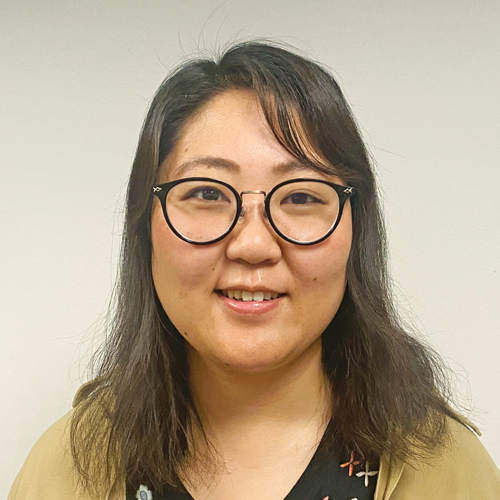“To open the writings of Nichiren Daishonin each day, to read them and study them—this is the way for us to live and strive together with the Daishonin, the Buddha of the Latter Day of the Law.” (Ikeda Sensei, The Wisdom for Creating Happiness and Peace, part 2, revised edition, p. 286)
Every religion has its sacred or original texts. In Buddhism, sutras record the teachings of Shakyamuni; in Christianity, the Bible; in Islam, the Koran.
In Nichiren Buddhism, the collected writings of the founder, Nichiren, consisting of letters of encouragement to followers and treatises on principles and doctrine, are regarded as the fundamental “scripture” upon which believers base their faith and practice. These texts are called “Gosho,” an honorific Japanese word for “writings.” Their distinguishing characteristic is that they were written by the founder, Nichiren Daishonin, himself and handed down to the present in their original form or as verified copies of the original.
For over seven decades, the Gosho has remained the cornerstone of faith for Soka Gakkai members, a source of hope and inspiration for those who have weathered and overcome every kind of difficulty by engraving Nichiren’s encouragement into their lives and vowing to widely spread the correct teachings, as Nichiren did.
In the foreword to the new edition of the Japanese version of the writings, Nichiren Daishonin Gosho zenshu, Ikeda Sensei writes, “We of the Soka Gakkai will forever walk the great path of basing ourselves on the Gosho, the writings of Nichiren Daishonin” (April 2022 Living Buddhism, p. 16).
In this issue, Living Buddhism chronicles the English translation of Nichiren’s writings and the voices of the members whose lives have been transformed by living them.
In April 1952, the first compilation of Nichiren Daishonin’s writings, Gosho zenshu, was published by the Soka Gakkai. It was less than a year after Josei Toda was inaugurated as the second Soka Gakkai President. He had resolved to compile and publish Nichiren’s writings so that his teachings could be accessible to all. Earlier editions had been published by other Buddhist schools, but they were missing significant works and contained errors.
President Toda, together with a team of Soka Gakkai members, worked diligently to publish the most accurate compilation in less than a year. The first 6,000 copies were printed at the start of the 700th year since Nichiren established his teaching of Nam-myoho-renge-kyo.
President Toda, in his foreword to that edition wrote: “It is my undying wish and prayer that this great scripture of such immense value will spread throughout Asia and the entire world” (April 2022 Living Buddhism, pp. 17–18). While the membership of the Soka Gakkai numbered only around 5,000, all living in Japan, President Toda’s dream was clear—that people worldwide would one day have access to these texts.
Nichiren, too, envisioned in the 13th-century that the Buddhist teaching he revealed would spread “from east to west in the Latter Day” (“On the Buddha’s Prophecy,” WND-1, 401), while his successor, Nikko Shonin, declared that Nichiren’s teachings would be translated in the future into other languages. He said: “Just as when the Buddhism of India spread eastward, the Sanskrit texts were translated and introduced in China and Japan, so when the time comes to widely declare the sacred teachings of this country, the Japanese texts are sure to be translated and spread in China and India” (Foreword to WND-1, xii).
The Spread of Nichiren Buddhism Worldwide
In October 1960, just five months after his inauguration as the third Soka Gakkai president, young Daisaku Ikeda immediately set out to spread Buddhism beyond the borders of Japan, arriving first on American soil. As more people began practicing Nichiren Buddhism around the world, it became increasingly necessary for translations of the Gosho to be made available. Amid his busy schedule in 1966, Ikeda Sensei spoke with the editorial staff of the Seikyo Times, then the Soka Gakkai’s English-language study journal, and suggested that they begin publishing English translations of the Gosho, starting with “Reply to Kyo’o.” The first translation of that letter appeared in the July 1, 1966, Seikyo Times.
In The New Human Revolution, Sensei recalls the difficult process of translating Nichiren’s writings into English.
Translation of frequently studied writings progressed, but the staff members in charge found themselves faced with one challenge after another. To convey the Daishonin’s teachings correctly, they had to first gain an accurate interpretation of the original text. Doing so, however, was no easy task. This was because the originals, which represented the essence of Buddhism, had been written in classical Japanese. The translators would therefore often spend several days consulting members of the Soka Gakkai Study Department and referring to President Yamamoto’s lectures as well as Buddhist dictionaries to arrive at a full and proper understanding of each passage. (NHR-11, p. 172)
The work of translating the Daishonin’s writings was taken on by the Soka Gakkai Gosho Translation Committee. These efforts continued steadily, and 13 years after the undertaking had begun, volume 1 of The Major Writings of Nichiren Daishonin was published in 1979, containing some 36 works. Additional volumes were published at a pace of one every other year. In the end, The Major Writings of Nichiren Daishonin was a seven-volume set that the members of the SGI-USA used to study the writings and apply its teachings to their daily challenges.
In 1999, those translations were revised and combined into a single volume titled The Writings of Nichiren Daishonin, containing 172 of the more than 400 works included in the Japanese-language edition.
In English, the Gosho now consists of three volumes: The Writings of Nichiren Daishonin, volumes 1 and 2, and The Record of the Orally Transmitted Teachings. The latter is not a writing of Nichiren’s per se but a compilation of points from lectures Nichiren gave on key passages of the Lotus Sutra written down by Nikko, his closest disciple.
With the Daishonin’s writings, we can tap into an unlimited source of courage and hope. Reading the Gosho and engraving the lessons in our lives enables us to wield the sharp sword of faith to overcome all difficulties and make the impossible possible. This has been the proud legacy of our three founding presidents that SGI members carry forward.

Etta Sue Henderson (Bluffton, South Carolina): In my early teens, I considered myself a devout Christian. I loved the Bible, and the minister even invited me to the adult Bible studies. At 14, when my father got sick, I prayed for him to live, but it didn’t happen. I was a daddy’s girl, so my father’s death was very traumatic for me. When I asked the minister why he died, I was disappointed in his answer. I determined to find the answer, and I began a spiritual journey.
In high school, I studied every philosophy and religion I could. In college, I realized that I needed more than study; I felt a desire to practice something.
I was introduced to Nam-myoho-renge-kyo in 1981 by a longtime friend who was a practitioner. When her father got sick, I watched her navigate her father’s illness and eventual death. When he passed, she was so strong. She talked about the Buddhist view of life and death, and I knew then that this is what I had been searching for.
I received the Gohonzon in 1982 and practiced in Chicago with many members who joined in the ’70s. I remember them being so excited when new study material came out because only a few books had been published then. The Major Writings of Nichiren Daishonin had just been printed in 1979. That was the first book I bought.
In my third year of practice, I hit rock bottom. At that time, my favorite Gosho became “Reply to Kyo’o.” Nichiren Daishonin writes: “Believe in this mandala with all your heart. Nam-myoho-renge-kyo is like the roar of a lion” (WND-1, 412). I just love the image of a roaring lion!
During the priesthood issue1 in the 1990s, everything was turned upside down. Many of us took study to a deeper level because Gosho quotes were being misinterpreted by the priests. I felt, I really need to have the Gosho in my DNA. People who were grounded in study generally could see the truth and didn’t go to the priesthood.
Now we are so fortunate to have so many of Sensei’s lectures on the Gosho, which enable us to know how to apply Nichiren’s words to our lives. Reading the Gosho together with Sensei’s lectures is even more powerful than reading it alone!
One passage from “The Opening of the Eyes” struck me: “I vowed to summon up a powerful and unconquerable desire for the salvation of all beings and never to falter in my efforts” (WND-1, 240). When I read that, I thought: Nichiren had to summon up a powerful and unconquerable desire? I thought Nichiren already had the desire! And then he had to chant for it never to falter. I thought that was just innate with him. Sometimes I don’t feel like talking to others about Nam-myoho-renge-kyo, but if Nichiren has to summon up the desire, I can summon up a desire too!
There have been times in my practice when I chanted for years to understand Nichiren’s writings with my heart, not just my head. In every case, I’ve had major realizations and profound shifts. If you have a doubt about something, seek from the Gosho and Sensei’s writings, from seniors in faith and chant to figure it out. It will be the most important thing you’ve ever chanted about.
Now with more than 40 years of practicing this Buddhism, I have accumulated immeasurable fortune, starting with my husband and two wonderful sons who all joyfully practice with the SGI. The Gosho passage I now turn to is: “When the skies are clear the ground is illuminated” (“The Object of Devotion for Observing the Mind,” WND-1, 376). With this passage in mind, I chant for a high life condition so I have the wisdom and conviction to transform anything. I now know I have the power to illuminate this world!

Mark Willwerth (Oakland, Calif.): When I started practicing in 1969, I remember we only had a few books in English: four volumes of The Human Revolution, a book called Complete Works of Daisaku Ikeda and Guidance Memo published in 1966. I treasured those books and bought every book that came out after that. In the 1980s many more books were published, and I couldn’t keep up with reading everything that came out, but now I have well over 200 books on my bookshelf!
The first Gosho that resonated with me was “The Drum at the Gate of Thunder,” which was published in volume 5 of The Major Writings of Nichiren Daishonin in 1988. This letter was written to the lay nun Sennichi who lived on Sado Island. Nichiren and her were not able to see each other, but Nichiren tells her: “Merely seeing each other’s face would in itself be insignificant. It is the heart that is important” (WND-1, 949).
Study in Buddhism is not for mere knowledge. If I use Nichiren’s or Sensei’s words to shape my situation, those words come alive in my life. It’s a way to overpower my doubtful inner voice.
For example, I was reading “The Sutra of True Requital” when I was struggling in my relationship with my brother. In the letter, Nichiren says: “Since I have realized that only the Lotus Sutra teaches the attainment of Buddhahood by women, … in order to repay my debt to my mother, I have vowed to enable all women to chant the daimoku of this sutra” (WND-1, 931). I had a lot of inner resistance to transform the situation because I felt I was right. But after reading this Gosho, I found that if I changed my prayer to: “In order to repay my debt to my mom, I vow to create unity with my brother” that made all the difference. I do my best to treat each letter as if it were written to me.
In studying, I think consistency is important. I found that if I studied three pages of the Gosho a day, I could finish reading an entire volume in one year. Over the years I’ve completed volume 1 four times and volume 2 once.
In “The Bodies and Minds of Ordinary Beings,” Nichiren says: “Because the Buddha’s mind is an excellent mind, persons who read this sutra, even though they may not understand its meaning, will gain inestimable benefit” (WND-1, 1128). It is reassuring to know that even if I don’t understand everything, just by reading the writings I can gain inestimable benefit!
The Writings of Nichiren Daishonin, vol. 1, came out in 1999, The Record of the Orally Transmitted Teachings came out in 2004 and volume 2 of The Writings of Nichiren Daishonin came out in 2006. Since the first books that were published, the translations have greatly improved, and that evolution is nothing short of amazing.
To the young people, more than what you study, a seeking spirit and passion for study is so essential. Based on studying the Gosho and Sensei’s study lectures, I have had major victories in my life.
Reading in Action, Word and Thought
During Ikeda Sensei’s first lecture to student division members on The Record of the Orally Transmitted Teachings, he speaks about how to read Nichiren Daishonin’s writings. This episode is from The New Human Revolution, vol. 6, revised edition, pp. 284–85.
When we read Nichiren’s writings, we should do so with the profound conviction that we are reading the truth, the absolute truth—that this is exactly how it is. In other words, we should read with faith, seek with faith and understand with faith.” …
“Western philosophy may begin from doubt, but when we are studying Buddhism, we must begin with faith. Even Shariputra, said to be foremost in wisdom among Shakyamuni’s disciples, attained enlightenment not through his knowledge or intellect but through faith.”
“Nichiren’s writings are scripture, a compilation of the Buddha’s words, … Each word and phrase is important. And especially when it comes to The Record of the Orally Transmitted Teachings, if we seek to understand it deeply, we should first read it aloud again and again in a clear, strong voice—to the point where we have practically memorized it.
“Also, we should read his writings in action, word and thought. This means resolving to live according to it: sharing its philosophy with others and practicing its teachings ourselves. Our actions must match our convictions. That is the attitude with which to approach the study of Buddhism, and it is also a basic premise of Eastern philosophy.”
Study Is the Driving Force for Human Revolution
Ikeda Sensei discusses the importance of reading the writings of Nichiren Daishonin and applying them to one’s life. This essay can be found in The Wisdom for Creating Happiness and Peace, part 2, revised edition, pp. 315–19.
In October 1271, shortly after the life-threatening Tatsunokuchi Persecution and just before departing for his exile on Sado Island, Nichiren Daishonin sent a heartfelt letter to his disciples in which he wrote, “One may be letter-perfect in reciting the Lotus Sutra, but it is far more difficult to act as it teaches” (“Lessening One’s Karmic Retribution,” The Writings of Nichiren Daishonin, vol. 1, p. 200).
He then went on to declare that, in encountering great persecution by practicing exactly as the Buddha taught, he alone had “read and lived” the passages of the Lotus Sutra predicting that its practitioners of future ages would be “despised, hated, envied, and resented” (see The Lotus Sutra and Its Opening and Closing Sutras, p. 110), and that “hatred and jealousy toward the sutra will abound even more after the Buddha’s passing” (see LSOC, 203).
No doubt the words of this indomitable lion king shook his beloved disciples to the core. He was asking, “How will you, my disciples, fight when you meet such trials or obstacles?”
The writings of Nichiren Daishonin are timeless scriptures. They are a stirring cry from his very being. They are an impassioned declaration of truth and justice, which he left for us who practice the Lotus Sutra in the Latter Day, an evil age rife with devilish functions. They are a mighty lion’s roar calling out to us powerfully: “Strive with courage and never abandon your faith!” “Adorn your lives with triumph!” “Resolutely defeat evil!”
That is why all of us, as the Daishonin’s disciples, must seriously ask ourselves whenever we read his writings: “How will I live my life? How will I challenge myself for kosen-rufu?”
To read the Daishonin’s writings with one’s life means to read them not as something that concerns others or as an account of something that happened long ago but as something that directly relates to us and the present, and to apply it to the challenges we face in our own lives. This is the correct path for manifesting the solemn spirit of the oneness of mentor and disciple.
It is important that we deeply impress the Daishonin’s words in our hearts—even if it is just a single line or passage that strikes an inner chord or feels as if it were written especially for us—and that we constantly make fresh efforts for the sake of kosen-rufu with unwavering faith. This is how we can observe the injunction of Nikko Shonin, the Daishonin’s direct successor, which calls on us to “engrave the Daishonin’s writings in our lives” (Gosho zenshu, p. 1618).[1]
During World War II, Mr. Toda spent two dark years in prison as a result of persecution by the Japanese militarist government. It was while behind bars that he awakened to kosen-rufu as the ultimate mission of his life. As the disciple of first president Tsunesaburo Makiguchi, who tragically died in prison, he vowed not to be defeated by the repressive forces of authority who were to blame for his mentor’s death. He was fearless; not even the prospect of execution by firing squad could deter him. Immediately upon his release from prison, he launched his great struggle for kosen-rufu.
This same persecution, however, had caused the rest of Mr. Makiguchi’s disciples to abandon their faith. In “The Opening of the Eyes,” the Daishonin writes, “Foolish men are likely to forget the promises they have made when the crucial moment comes” (WND-1, 283). At the crucial moment, these disciples trembled and cowered and discarded the precious sword that was their faith in the Mystic Law. Mr. Toda lamented and grieved at this turn of events. Why would mere imprisonment cause them to abandon their faith? Wasn’t it the most brilliant opportunity to acquire great and everlasting benefit? After all, there is nothing timid or fainthearted about the faith that the Daishonin describes in his writings.
President Toda reflected. He contemplated the matter seriously. Day and night, this man of extraordinary intellect thought deeply, constantly asking himself why the others had given up faith.
He came to the conclusion that they lacked a foundation in Buddhist study, which clarifies what faith is all about and serves as the driving force for one’s practice. He realized that he had forgotten to teach them to read the Daishonin’s writings. If he enabled members to imbue their lives with Buddhist study—that is, with the teachings contained in the Daishonin’s writings—they would not quit practicing. Even the timid would be inspired to persevere in their struggles with courage. The Daishonin’s writings—that is the key, he realized.
Based on Mr. Toda’s guidance to this effect, which sprang from the painful lessons of his wartime experience, the Soka Gakkai as a whole—leaders and members alike—carried the Daishonin’s writings with them everywhere and studied them thoroughly.
There is no Buddhism without study. And Buddhism without faith is not Buddhism.
Whenever we had a spare moment [in those early days of our movement], we studied the Daishonin’s writings. At every meeting, we read them, discussed them, and studied them together. A bright new flame burned within us. Our eyes sparkled with the vision of a vast new future. Reading the Daishonin’s writings contributed directly to our human revolution; it was the impetus for limitlessly deepening our faith.
The Buddhist study I am referring to is not the study of abstract concepts. It is not about memorizing difficult doctrines or becoming a scholar or academic.
The study of Nichiren Buddhism that we undertook at that time served as a source of strength to persevere in our lives, in our daily struggles and in our efforts for kosen-rufu. It was a process of acquiring an understanding of the teachings and principles of Nichiren Buddhism, a great philosophy that we could actually make part of our lives in order to take on life’s challenges and win in society.
The Passage That Changed My Life
Young people share how their lives have been shaped by Nichiren’s writings.
It is the power of the bow that determines the flight of the arrow, the might of the dragon that controls the movement of the clouds, and the strength of the wife that guides the actions of her husband. (“The Bow and Arrow,” The Writings of Nichiren Daishonin, vol. 1, p. 656)

Nicole Rivera • New York
I joined the SGI in 2016 and received The Writings of Nichiren Daishonin as a gift. It looked like a sacred text, and to be honest, I didn’t really read it.
For the last couple of years, my fiancé and I have been struggling in our relationship as new parents. As resentment built, it affected our communication and resulted in many fights. This was impacting our son, who is now 3. We got to the point of talking about separation.
I sought guidance from a senior in faith. When she came over, I shared honestly that I had been chanting for family harmony but nothing was changing. She listened, then asked if we could read the Gosho together. She turned to “The Bow and Arrow.” This letter is about how the wife determines everything.
As we read it, I began weeping. I realized that I refused to take responsibility because I was seeing myself in a supporting role, not in the lead. But I needed to be a pillar of my family in order to transform my deepest karma of feeling like the victim of my life. That one visit where we studied the Gosho allowed me to recommit to my partner and, in turn, changed everything in our relationship.
Now we are in rhythm with each other, we both feel supported and we’re moving toward the same goals. I transformed two-and-a-half years of suffering just by taking responsibility in this way.
Why is it important to read the writings?
I encourage the young women I support to read it, but some of them think it’s nebulous, the language is intangible and that it isn’t relevant to the time. Sometimes it feels far removed for me too, but that’s only when I’m trying to understand it intellectually as if I’m learning about Buddhist history. When I read it with a seeking spirit, things pop out that directly relate to what I’m experiencing, and I feel it. It’s a tool that I can take with me to the Gohonzon to redirect my prayer. It makes my practice that much stronger.
Also, Nichiren speaks so definitively about the Law. It’s the text that the three founding presidents studied to become strong. We have access to the same things as our mentors did so we can develop the same conviction.
Each of you should summon up the courage of a lion king and never succumb to threats from anyone. The lion king fears no other beast, nor do its cubs. Slanderers are like barking foxes, but Nichiren’s followers are like roaring lions. (“On Persecutions Befalling the Sage,” WND-1, 997)

Isaiah Siapno • San Diego, Calif.
During one of the hardest times of my life, I picked up The Writings of Nichiren Daishonin. My mom had just gifted it to me six months earlier. At the time, I was figuring out who I truly was, my path and my identity beyond the things that I had in life. I closed my eyes, flipped to a page and opened to “On Persecutions Befalling the Sage.” In this letter, Nichiren writes about courage. After reading it, I chanted for several hours, and it was probably the strongest I have ever prayed. This passage helped me forge a determined prayer.
Do you have another writing that is a go-to?
Yes, “Climbing Up Dragon Gate” (WND-2, 673–74) is another one of my favorites. This writing to me is about the difficulty of becoming happy and attaining Buddhahood. In it, Nichiren talks about fish climbing a 1,000-foot waterfall. To climb the waterfall, they have to traverse arrows being shot at them and people and animals taking them out of the water. It represents the devilish functions and obstacles that divert us from our true goal of happiness. When I encounter obstacles in my life, I read this and remind myself that these are just little things on the way to achieving ultimate happiness for myself.
How do you read the Gosho?
I like to read a little bit every day. Sometimes while chanting, I’ll take a break and read it. If I don’t understand something, I can take the time to chant about it and reflect on what Nichiren is saying. I try to do this in the morning because it sets the tone for my day.
What do you gain most from reading Nichiren’s writings?
It brings out a part of me that has the confidence to conquer all difficulties. I also feel that I can share Buddhism more easily because I can speak to our practice and faith confidently. I’ve recently been sharing Buddhism with a couple of friends who are going through hard times. It would be selfish of me not to do so.
At times, actual proof doesn’t happen right away, but when I read and try to understand the Gosho, I’m always reminded that I’m on the right path. It’s allowed me to draw a line in the sand and move forward with conviction every day.
As practice progresses and understanding grows, the three obstacles and four devils emerge in confusing form, vying with one another to interfere. … One should be neither influenced nor frightened by them. (“Letter to the Brothers,” WND-1, 501)

Archish Mittal • Ithaca, NY
At 21, I was facing a difficult challenge regarding my immigration status. I was lost and searching for meaning in life. A men’s division member read “Letter to the Brothers” with me. What struck me the most was the last line of this particular passage: “One should be neither influenced nor frightened by them.” Nichiren writes that one shouldn’t be frightened by the inevitable obstacles that one will face in life.
I had a lot of fear about what would happen if my visa didn’t go through. I deeply chanted about and read this passage over and over to gain conviction that I would win. After a few weeks, I got my visa! It was my first taste of victory using my Buddhist practice and the Gosho. My confidence in the Gosho deepens as I continue to see victories in my life based on Nichiren’s words.
Do you have other favorite passages that you go back to?
I often go back to “The Strategy of the Lotus Sutra” and “Reply to Yasaburo.” In “The Strategy of the Lotus Sutra,” Nichiren Daishonin says: “No matter how earnestly Nichiren prays for you, if you lack faith, it will be like trying to set fire to wet tinder. Spur yourself to muster the power of faith” (WND-1, 1000). That’s the one I go to when I’m facing an obstacle.
In “Reply to Yasaburo,” Nichiren writes: “You must simply make up your mind. Look at the world this year as a mirror. The reason that you have survived until now when so many have died was so that you would meet with this affair. This is where you will cross the Uji River” (WND-1, 829). This is one I go back to when I am wavering and full of doubt.
How do you read the Gosho?
Ikeda Sensei says: “Let’s read the Gosho regularly! Even just a little is fine. Even a single sentence. Just opening the Gosho is a start. At any rate, let’s strive to read the Daishonin’s writings. … It’s important to have the spirit to study the Gosho, to open it up. Even if you forget what you’ve read, something profound will be engraved in the depths of your life” (July 11, 1997, World Tribune, p. 13).
I make it a point to read a line from the Gosho every day before I leave the house. Sometimes, it’s a single passage, or when I’m late for class, I just open and close the Gosho. There is something that changes in my life when I seek from Nichiren’s words.
In 1966, Sensei requested that Nichiren’s writings be translated into English for the first time. Why do you think that was an important step?
Sensei knew that all of us were going to face many obstacles in our lives. We can break through them if we base our lives on the writings, as he did. In the most desperate circumstances of my life when I felt like there was no way out, all I had was the Gosho to pull me through.
I recently visited a young man who hasn’t been coming out to meetings for a long time. He’s going through a difficult time, but he agreed to meet me. When we met, I encouraged him to read the Gosho to transform his suffering, and he bought volume 1 of The Writings of Nichiren Daishonin the following day. With the Gosho, and the SGI-USA publications, there is no way that he won’t become happy.
Neither the pure land nor hell exists outside oneself; both lie only within one’s own heart. Awakened to this, one is called a Buddha; deluded about it, one is called an ordinary person. The Lotus Sutra reveals this truth, and one who embraces the Lotus Sutra will realize that hell is itself the Land of Tranquil Light. (“Hell Is the Land of Tranquil Light,” WND-1, 456)

Joyce Wang • Cupertino, Calif.
I really resonated with this passage from “Hell is the Land of Tranquil Light” when I was struggling with my mental health seven years ago. I felt like my life was a direct reflection of this quote. Because my mind was in hell, everything around me was hell. But when my Buddhahood is summoned in my mind and heart, my entire world changes. I can read and reread this Gosho, and it can touch my heart in different ways each time.
What do you feel is significant about reading Nichiren’s writings?
They are so beautiful and profound, not just because of the theory, but because Nichiren poured his heart and soul into these letters to his followers.
Recently, there was an individual that I was worried about, and I wanted this person to change so badly that I started feeling hopeless. Then I read “New Year’s Gosho.” In it, Nichiren writes: “We ordinary people can see neither our own eyelashes, which are so close, nor the heavens in the distance. Likewise, we do not see that the Buddha exists in our own hearts” (WND-1, 1137).
It reminded me that this person has their own mission. They may not see their Buddhahood now, but I can continue to chant for them with confidence that they are fulfilling their own unique purpose in life.
Why do you read the Gosho?
One reason is there are many misinterpretations of things everywhere. That’s why I feel it’s always important to go to the source material, and for us, that is the Gosho. Of course, we also have Sensei’s lectures on the Gosho that make it clear how we can apply these texts to our lives.
Whenever I hear something questionable, I do my own research and go to the source so that I can develop my own understanding.
I’m so grateful for the organization, because I’m always guided back on track with study. Recently, my zone young women’s leader and I have been doing weekly 10-minute calls during our lunch break to read the Gosho together. We both have found it so encouraging. If it weren’t for the SGI organization and my comrades in faith, I’m sure I would not be where I am today.
From the August 2024 Living Buddhism
References
- Article 11 of “The Twenty-Six Admonitions of Nikko.” Nichiren Daishonin’s designated successor, Nikko Shonin, wrote the “Twenty- Six Admonitions” in 1333 for the sake of practitioners of future generations to maintain the purity of the Daishonin’s teachings. It outlines the fundamental spirit of faith, practice and study. ↩︎
You are reading {{ meterCount }} of {{ meterMax }} free premium articles

